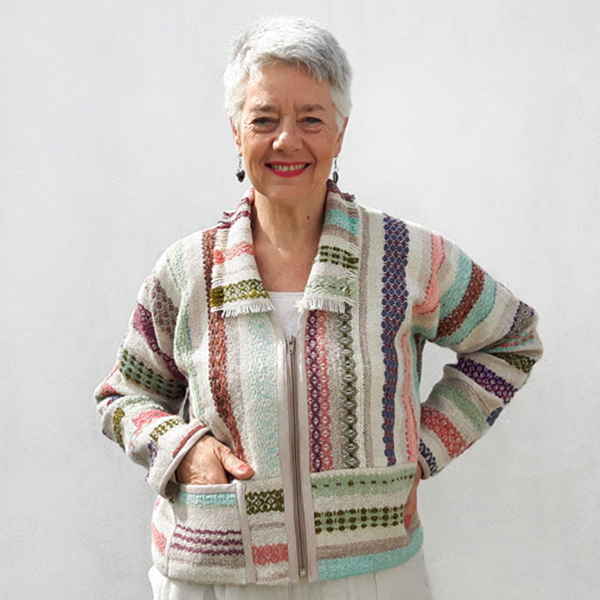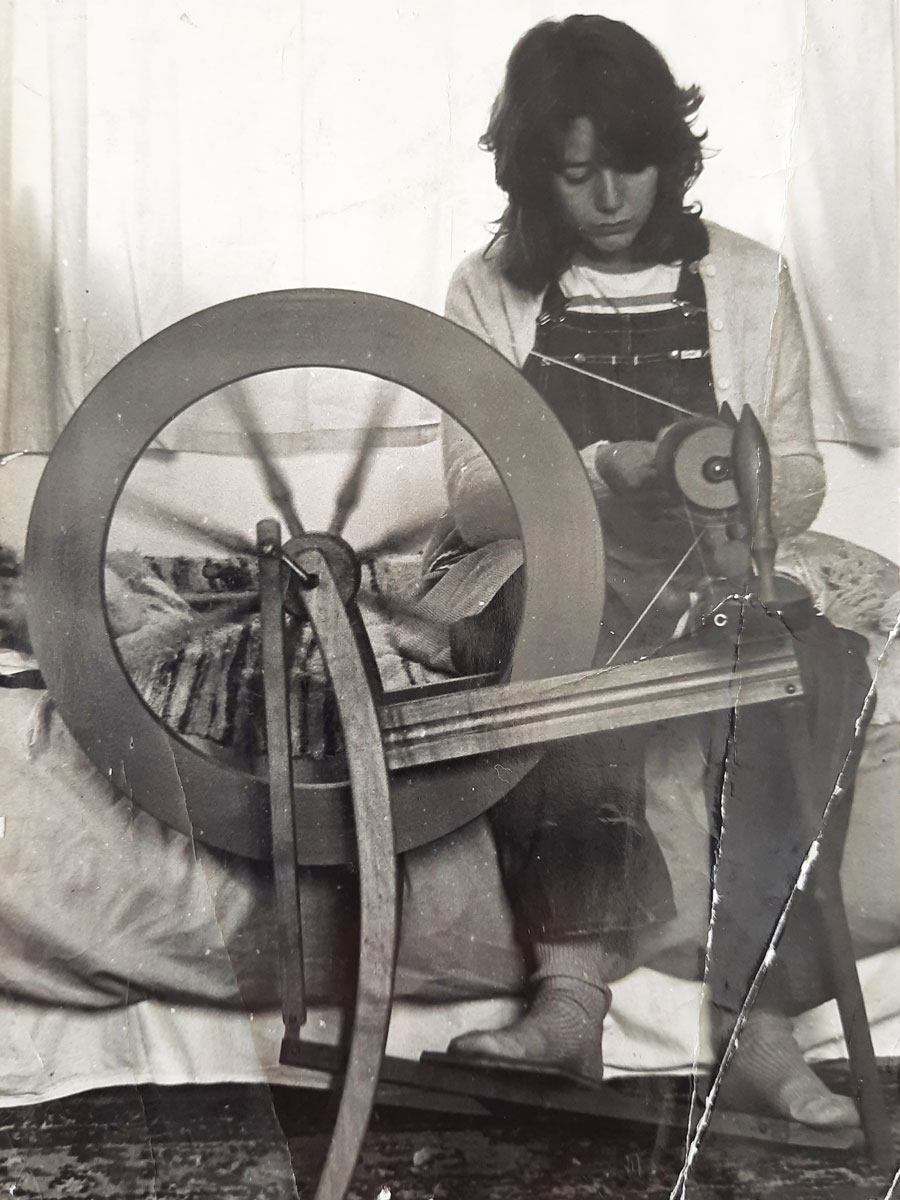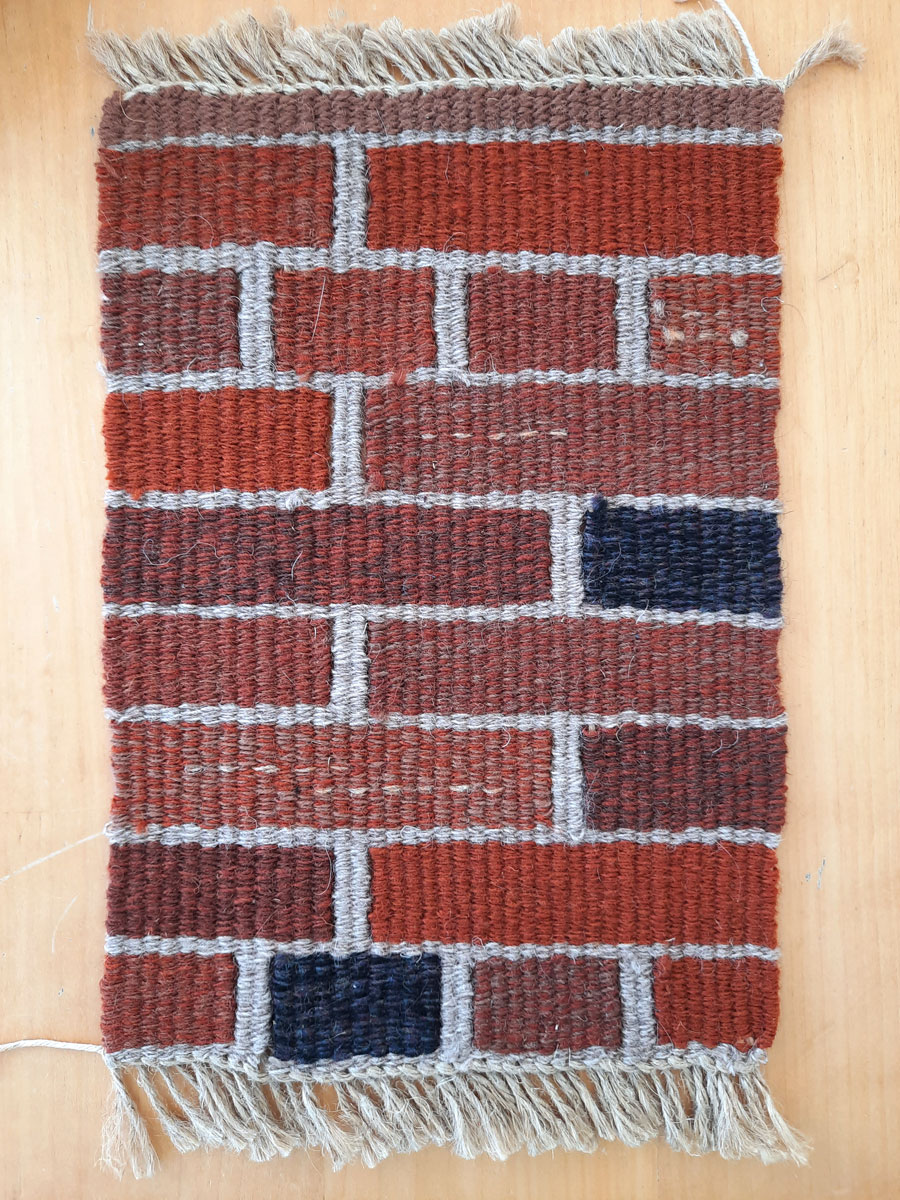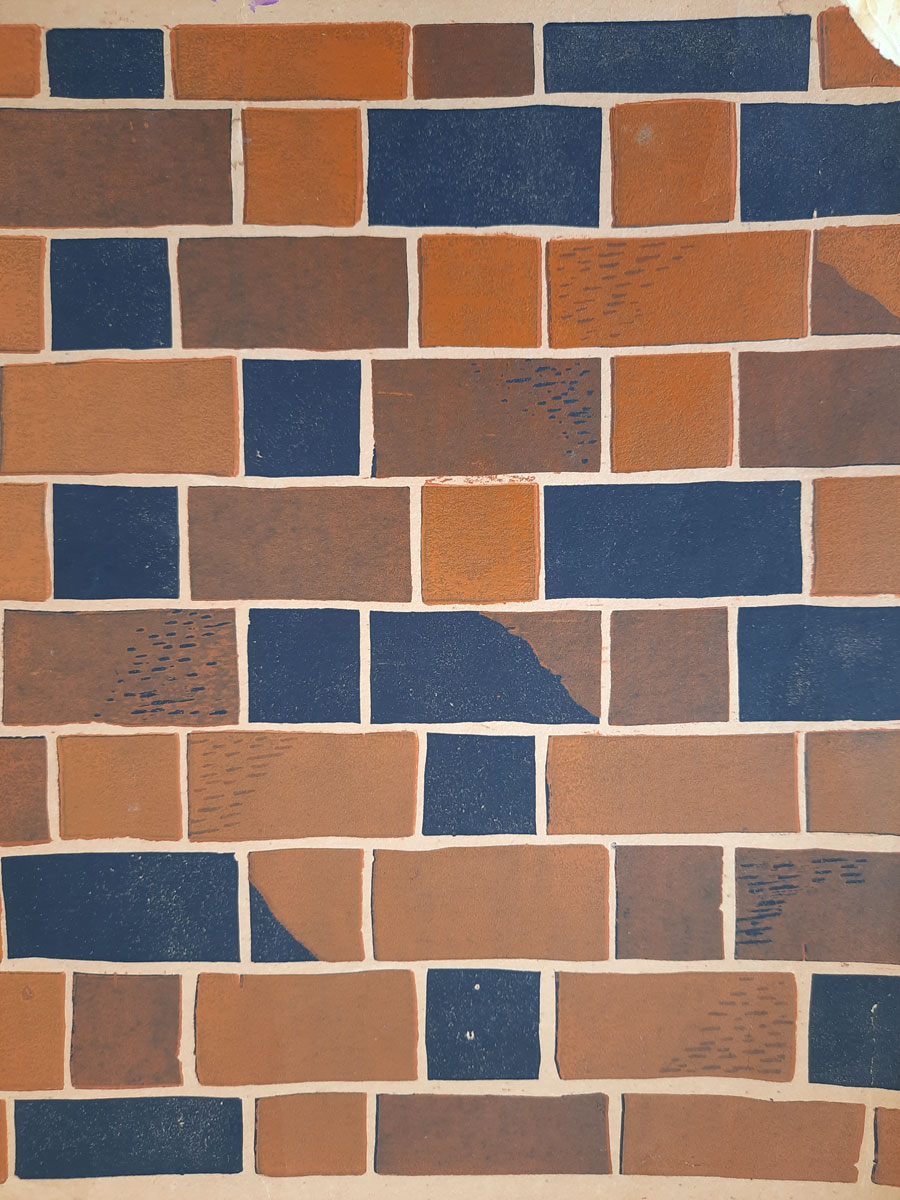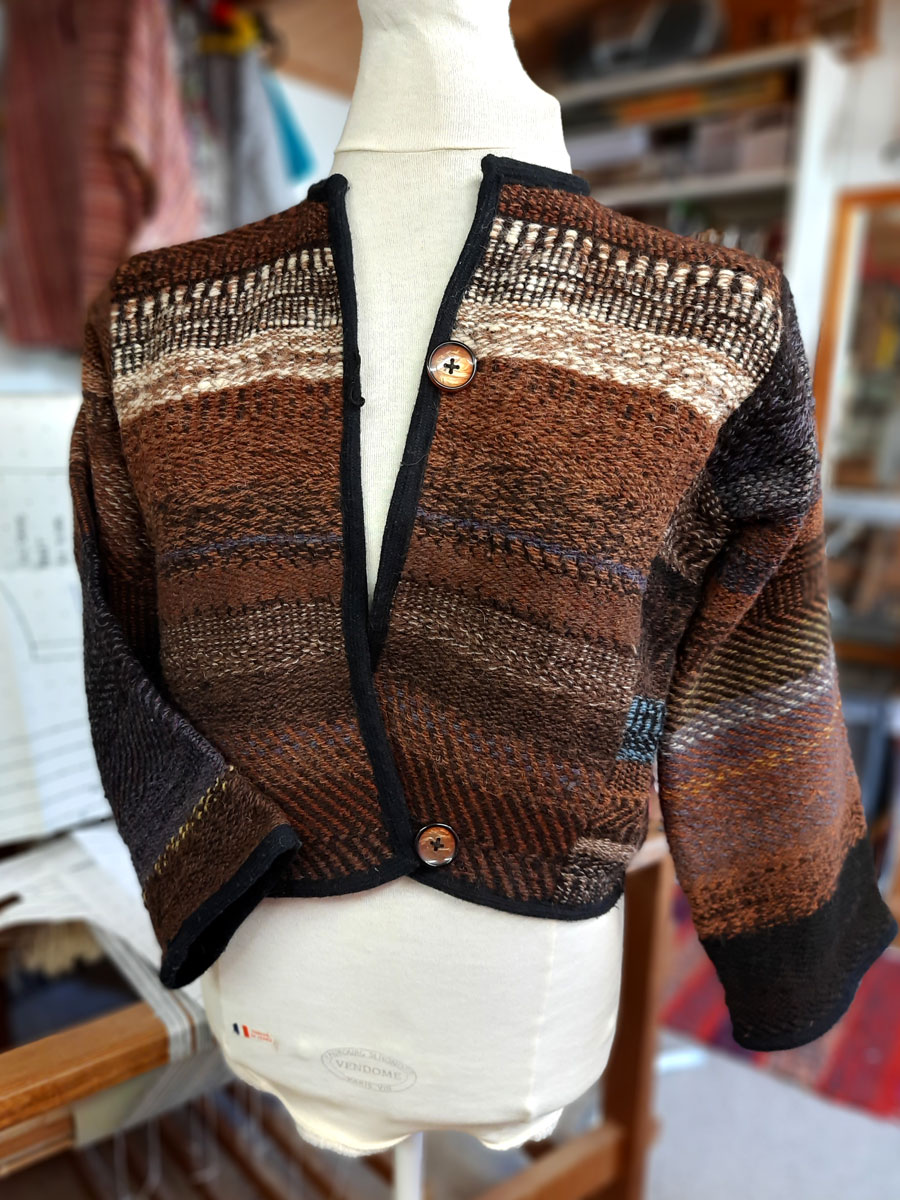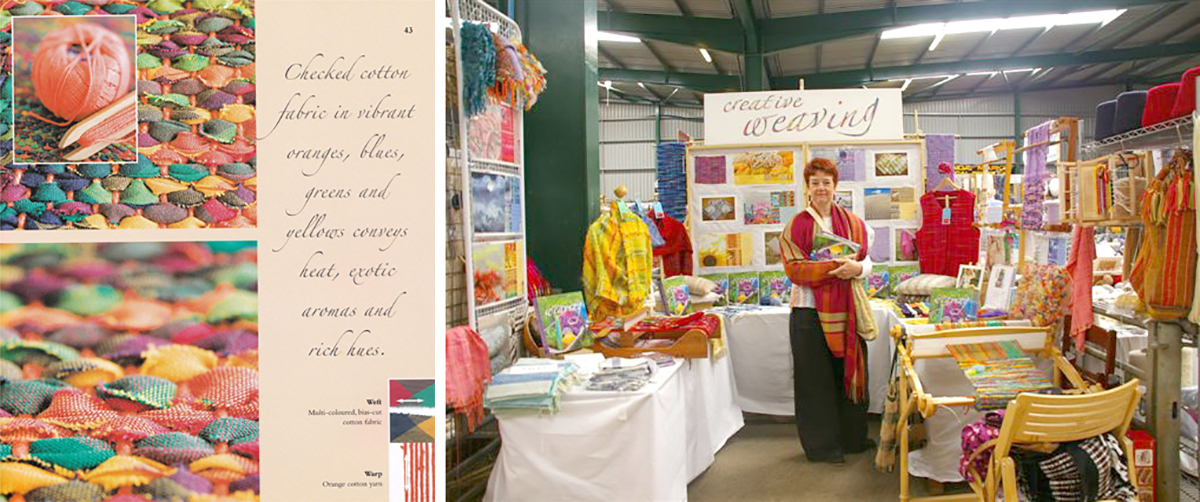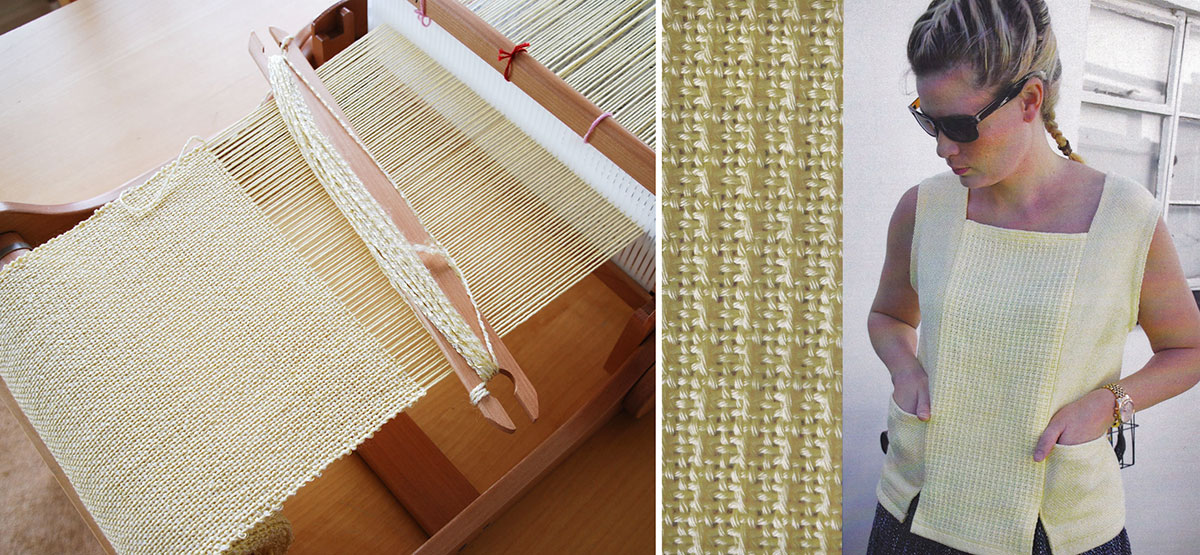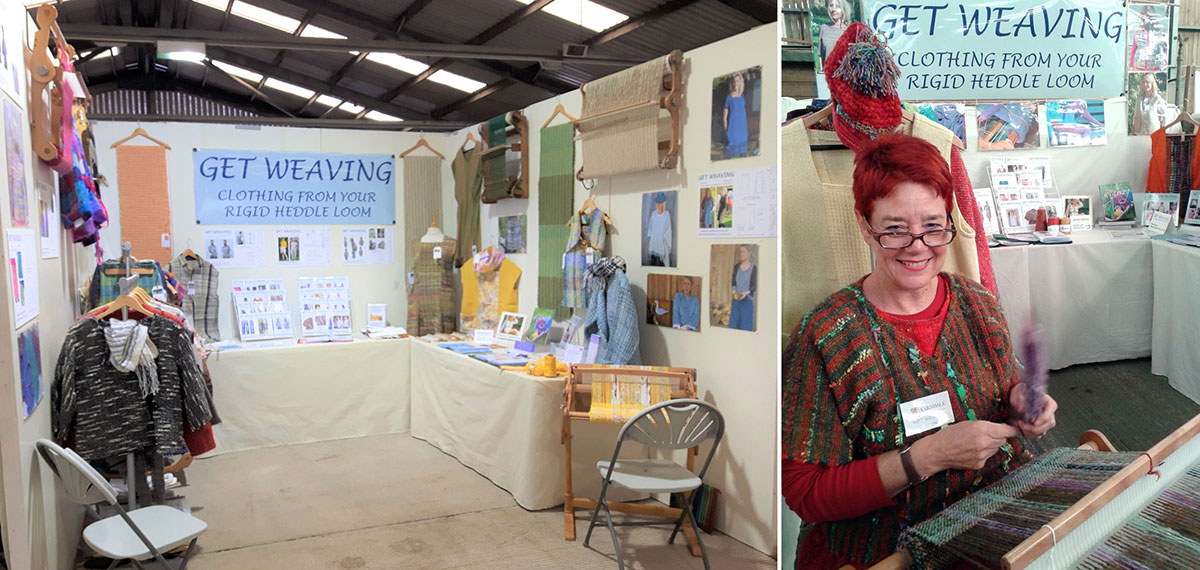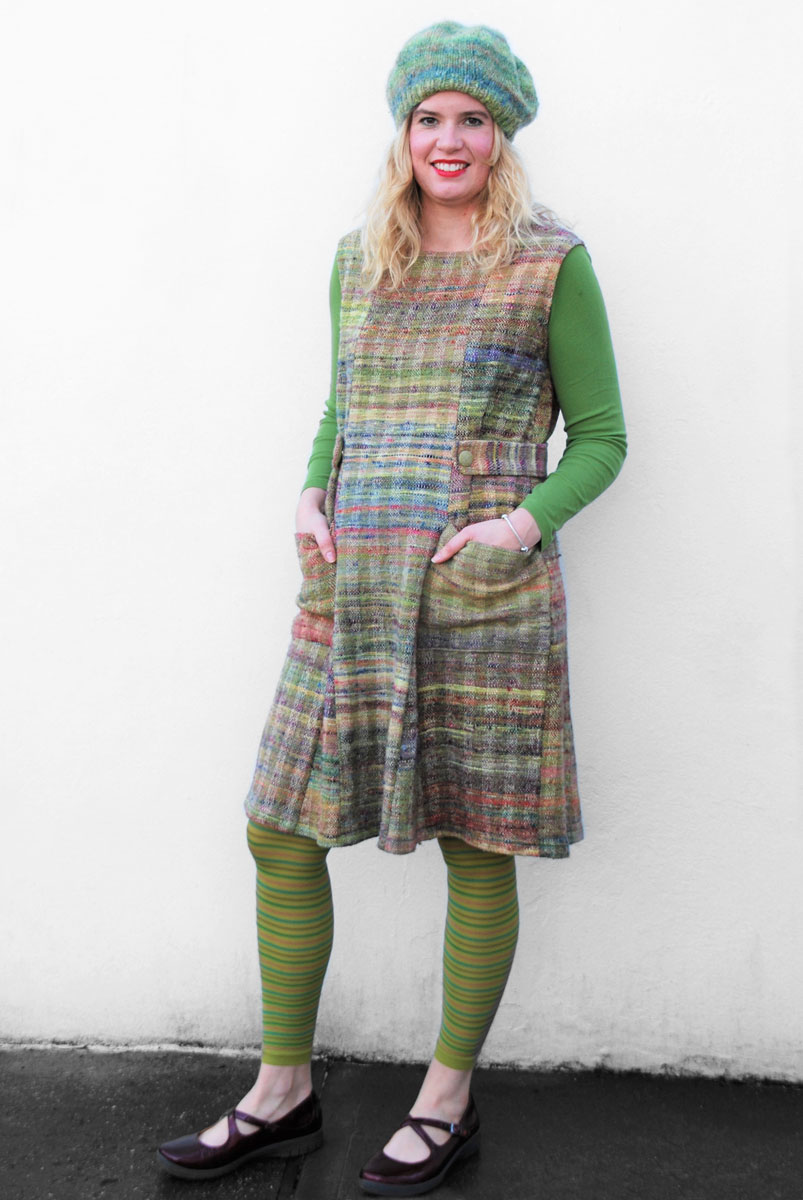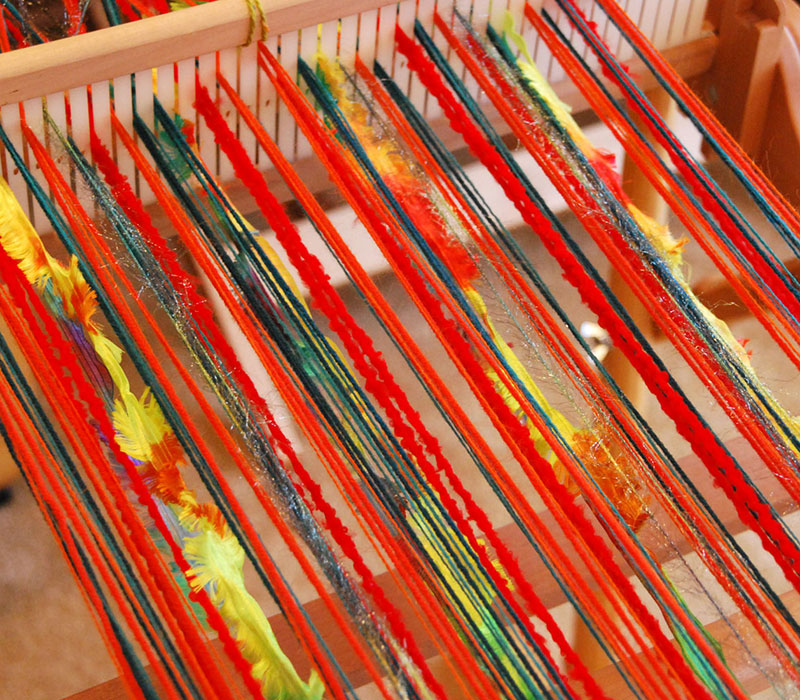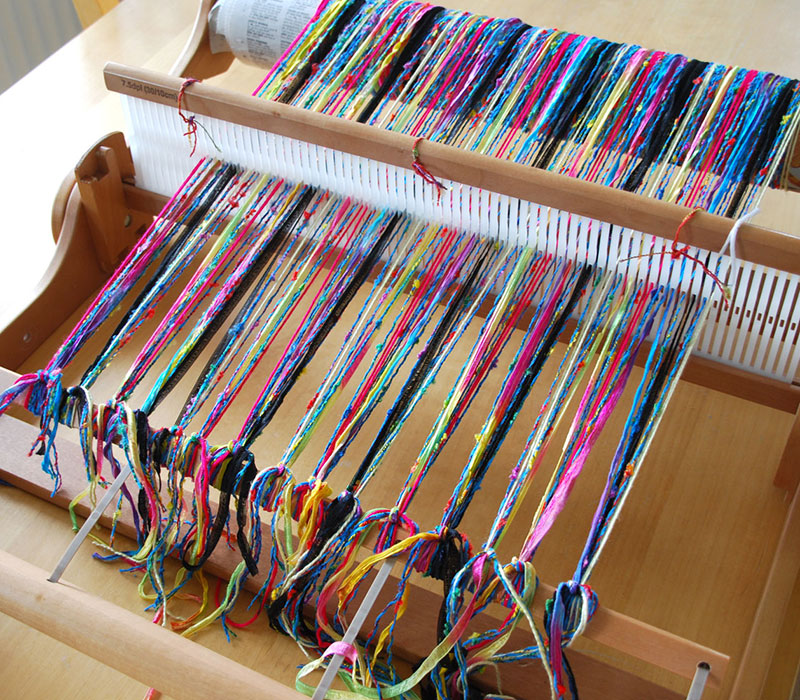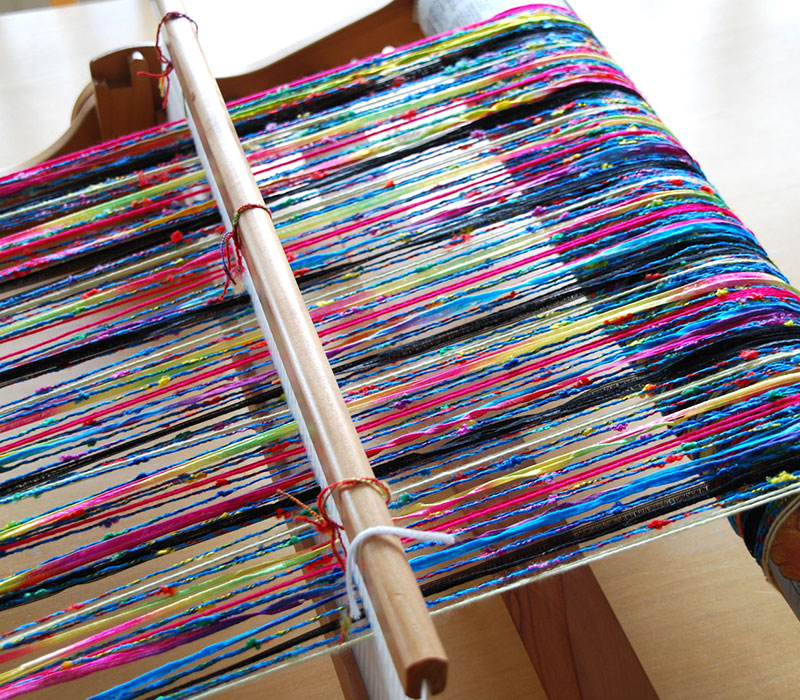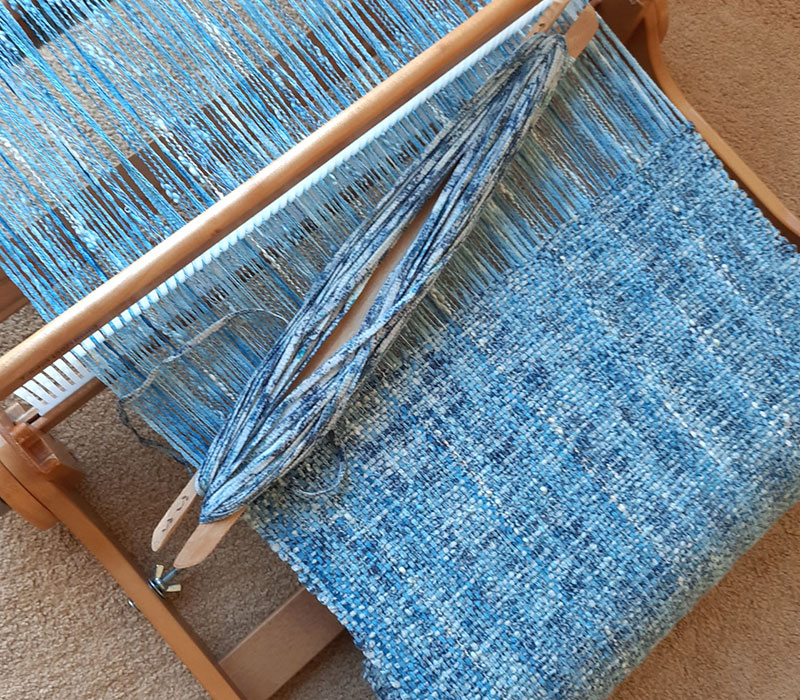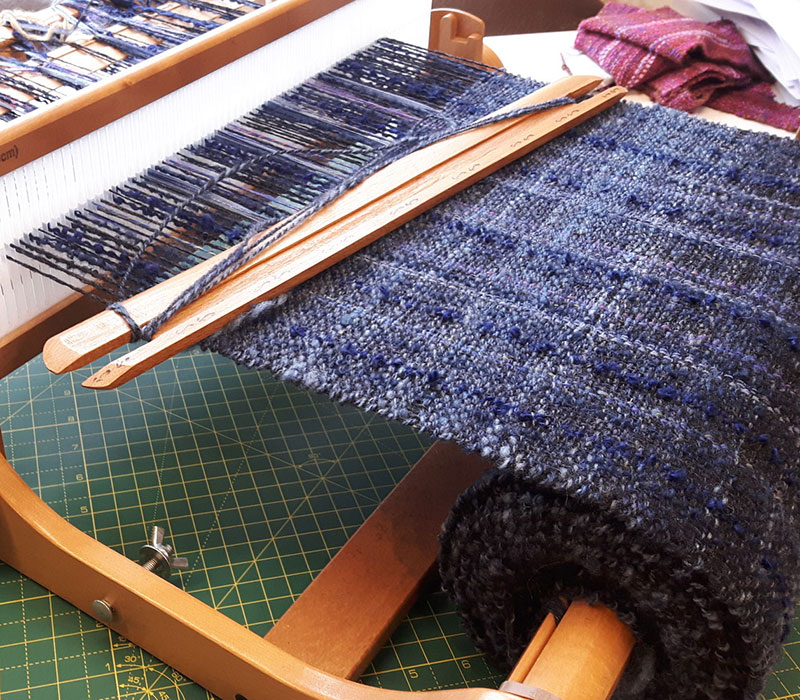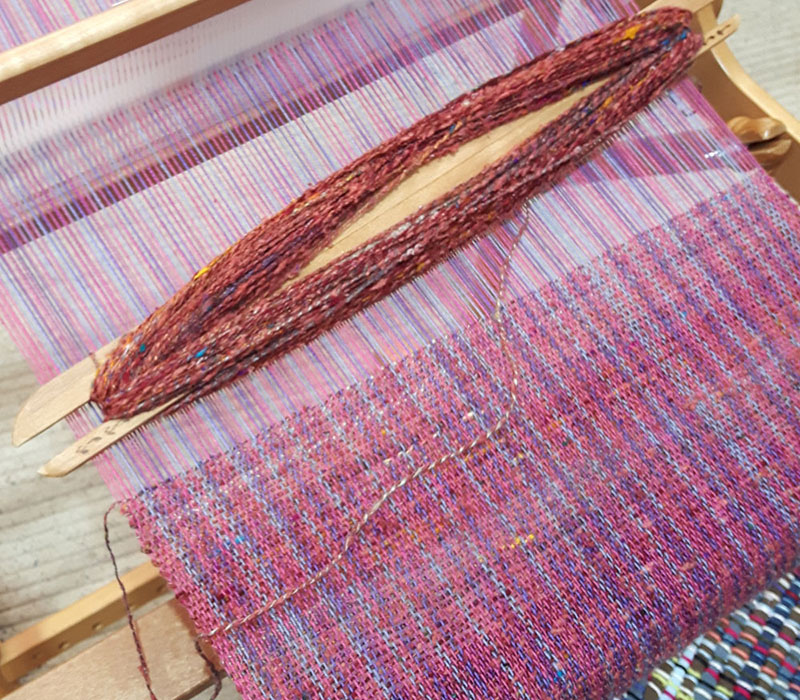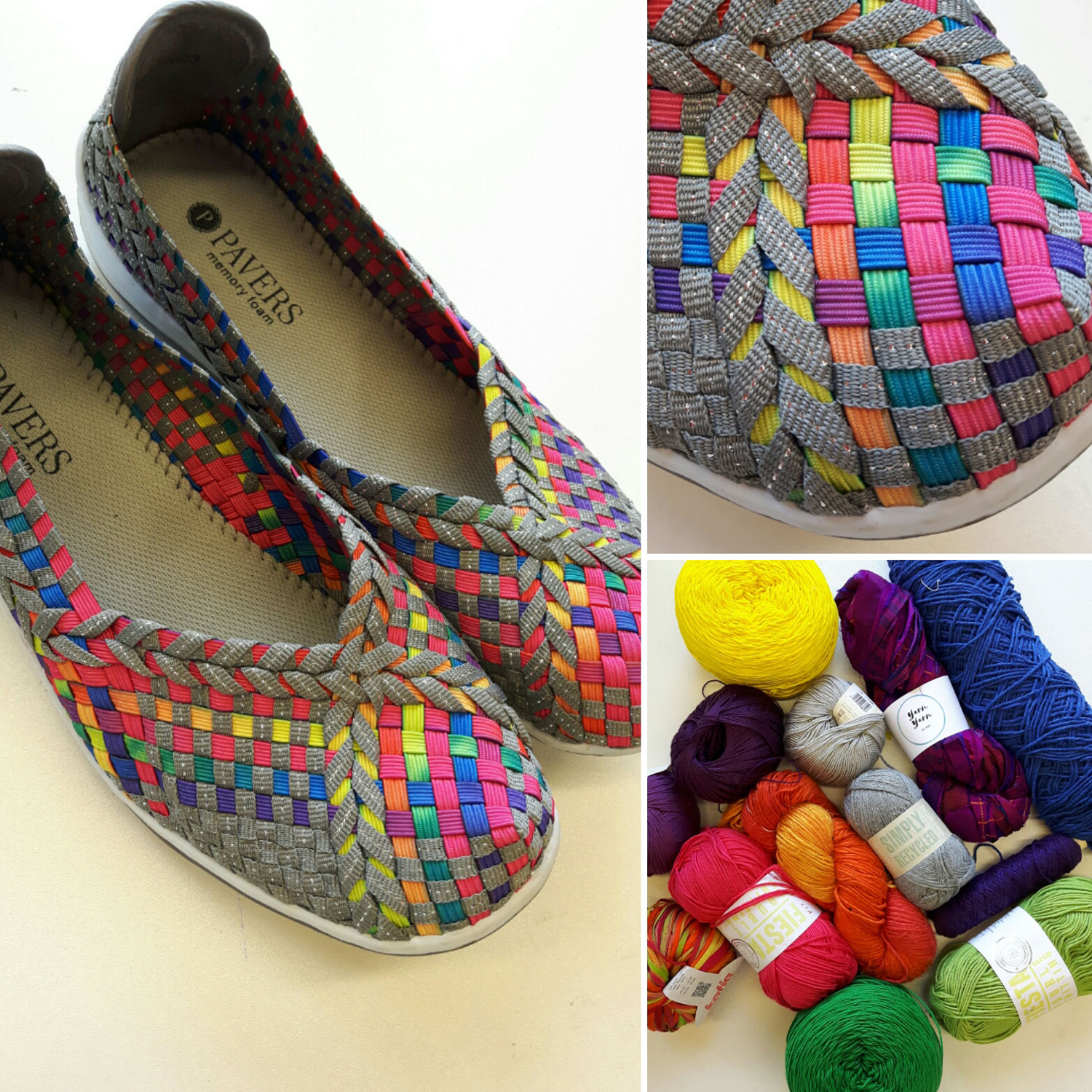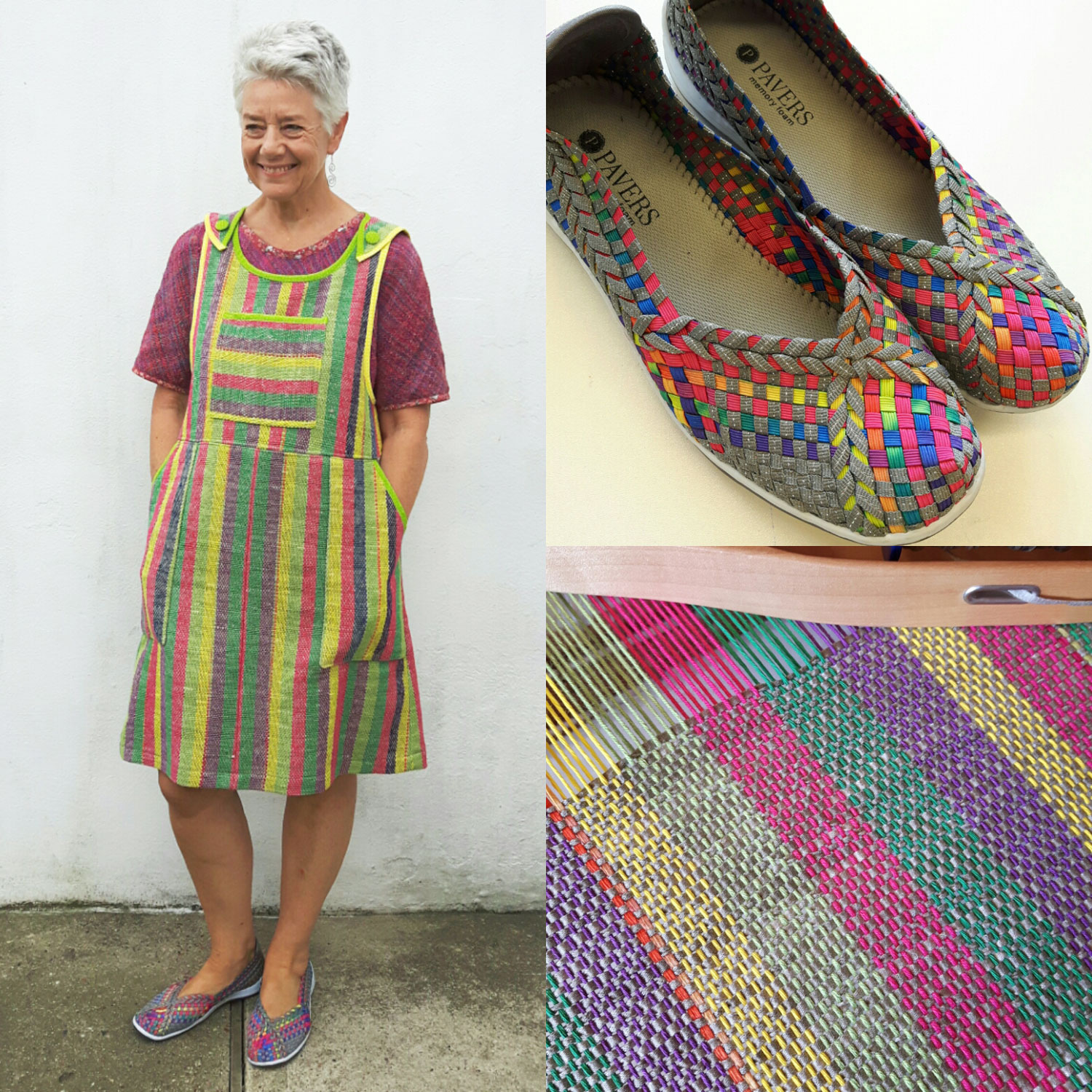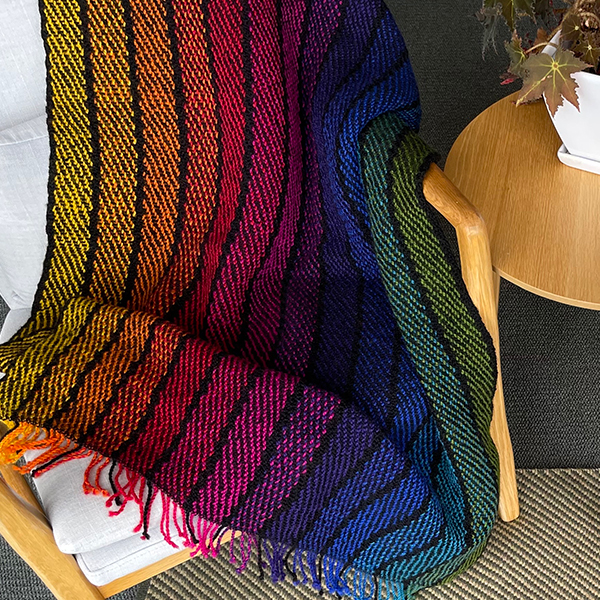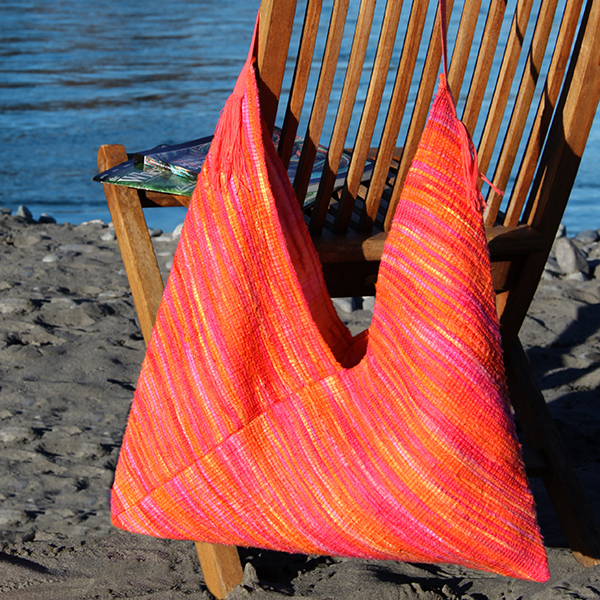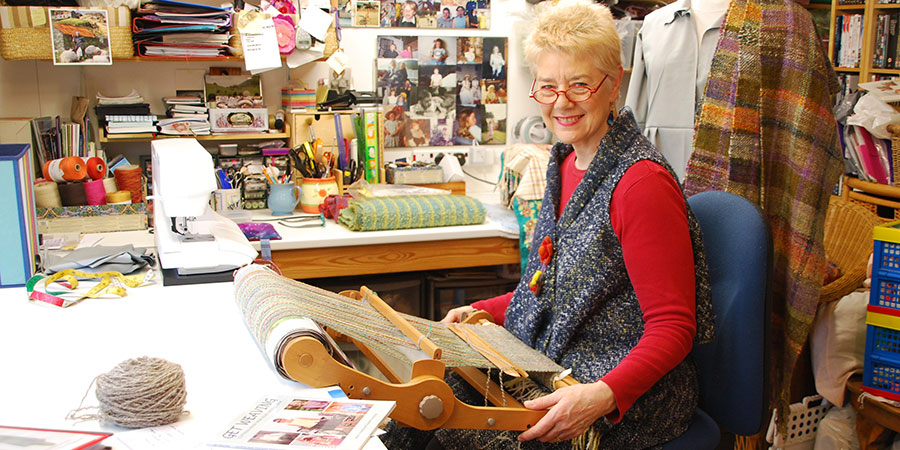
Ashford Artist of the Month – Sept 22 – Sarah Howard
Some of you will know Sarah Howard as she has featured in The Wheel magazines a few times before. Sarah is very passionate about getting people weaving and also getting people to wear their weaving! If you are a rigid heddle weaver Sarah has loads of patterns suitable for fabric woven on rigid heddle looms.
I hope you enjoy reading her story.
![]()
Kate
NAME: Sarah Howard
BUSINESS NAME: Get Weaving
Where are you from, and what do you do as an artist?
My name is Sarah Howard, I live in Clacton- on- Sea, Essex, United Kingdom, five minutes from the coast. I spin a variety of my own yarns, weave fabric and sew clothing from my handwoven fabric, designing my own sewing patterns which I make available to other weavers.
What was your background before you started creating fibre art?
For over 30 years I was a teacher of Art and Textiles in secondary schools (11-18 years). When my children were young I taught adults at a local Adult Education Centre where I met my good friend and fellow author Elisabeth Kendrick.
How did you get started on your fibre artist journey?
Like so many people I was taught to knit and sew by my Mum and realised what very useful skills they were- I could make something that no-one else had! Being left- handed made some things a bit awkward but I now think that may have helped me with problem solving.
I started making simple clothes when I was about 10 years old and was also given a 12in, 2- shaft Weavemaster loom at around this age. I finished weaving what was already on it and made “homewares” for my dolls’ house.
In the 1970’s I went to a wonderfully inspiring Teachers’ Training College where I was taught to spin- Jacob fleece- on an Ashford Traditional Wheel and weave on a Dryad 4-shaft table loom, 13 dent, using my handspun Jacob singles for the weft. Later I used colours inspired by our beautiful college grounds, printmaking and weaving were my favourite skills.
At some point during my time at college I discovered a wonderful book called “Cut My Cote” by Dorothy K. Burnham and started to think about weaving narrow fabric for clothing. My first jacket used the same 9-cut oiled wool as the small tapestry, had minimal shaping and was a bit itchy but I was really pleased with it. So the journey began…
How did your journey evolve over time?
Teaching adults weaving and spinning at an Adult Education Centre was an absolute joy. Many of them were accomplished dressmakers and wanted to weave their own fabric. We begged and borrowed an assortment of equipment and with a wide range of ages in the class had great fun learning and sharing ideas. We even had 2 students who had been sent along for “therapy”, to learn to relax and build their self- confidence.
Each year the Centre held a fashion show which we were very happy to take part in, although none of my students wanted their work judged- helpful comments only please! They were full of innovation and made such wonderful garments that in 1986 Elisabeth and I self- published our first book “Simply Woven”, which we took to different Guilds with a slideshow, to show what could be made on a small, table loom, some weavers took a lot of convincing!
In 2005, when I was back in full time teaching, Elisabeth and I were invited by Gaia Books to write our second book “Creative Weaving”, the first in a series including Creative Dyeing, Creative Spinning and Creative Felting. We included as many different fibres and techniques that could be used on small looms to show their versatility. We took this book and as many looms as we could pack, along with rails of garments, to wool shows across the country to sell the book, demonstrate and encourage people to have a go.
In 2014 Elisabeth and I thought about having our first book “Simply Woven “ re-printed as we were getting lots of requests for copies. Instead we decided to start from scratch and started planning our third book “Get Weaving”. A printers’ near Elisabeth’s were very helpful, working to digitally transform our cut-and-paste pages of text, diagrams and photos to organised pages; if something didn’t look quite right it was easy to change on the monitor. In 2009, I purchased my first 12in Ashford Knitters loom.
The first garment I made with fabric from my new 12in loom was a top made from cotton and viscose yarn with a pick up stick design, sett 7.5dpi. The fabric is 9in wide and there is minimal wastage. I then made a dress from the same design with godets for extra width at the hips and hem, with a Shetland wool and silk warp and a hand dyed, handspun Shetland wool singles weft. When I wore this to Wonderwool Wales I was asked if I had a pattern for the dress and if so, could the lady buy a copy. This was the start of Get Weaving sewing patterns.
What do you do with your creations/art/finished pieces?
Nearly all of my woven fabric these days is for making hand woven versions of my favourite garments, then producing a multi-size sewing pattern to share with other weavers. I love using mixed warps and a single yarn for the weft so I can weave without changing shuttles. Mixed warps pictured below.
I always make a “mock-up” of a new pattern, to check the fit and avoid needing to do alterations to my hand woven version.
Most of my weaving for garments is done on my 20in Ashford Knitters Loom, which I find easy to set up and weave on, small enough to prop on a table or to take out with a stand to weave at get-togethers with friends.
If you sell your work – where do you sell it?
I sell my sewing patterns in my etsy shop. I have now produced around 50 sewing patterns, which are shipped all across the world. They are full size, multi-size paper patterns with an instruction booklet. I also have 2 booklets, “Cutting Without Fear” and “Making a Mock Up”.
www.etsy.com/uk/shop/GetWeaving
How do you manage a balanced life as an artist?
Like most craftspeople I don’t find that there are enough hours in the day, ideas come quickly but the process of designing the pattern, making a mock-up, weaving the fabric and making the garment takes a bit longer!
Once I’m happy with something I work on the multi-sized paper pattern and the instruction booklet. I ask several people to proof read them for me to make sure they make sense, then I’ll add diagrams and photos to illustrate them. From start to finish the whole process takes about 3 months.
Where do you draw your inspiration from?
My choice of colours and yarns may come from a photo of some flowers, a basket of co-ordinating yarns or simply to match an existing item in the wardrobe. Once it was to match some shoes!
Do you have advice for people just starting out on their fibre journey?
If I give advice to other people starting on their fibre journey it often starts with a suggestion to try different pieces of equipment, whether it’s spinning or weaving, before buying. A local Guild of Weavers, Spinners and Dyers can be really helpful for this as they often have equipment to lend. The most complicated, or largest or most expensive piece of kit isn’t always the best way to start in my opinion, which is why I always recommend the 20in Knitters Loom. And a bit like knitting needles, you need a variety of heddles so get as many as you can afford. Many pieces of weaving fail simply because the wrong heddle was used.
Where will your fibre journey take you in the future?
With each new pattern I like to use a technique or an idea that I haven’t used in a previous one. It might be the way the pattern is laid out on the fabric, or a shape of a sleeve, placing of darts or seams, or a way to finish or embellish a garment. Many of my customers have used one pattern multiple times, in different colours or yarns, making their own changes such as the length of the garment or the fastening. I love to see what other people make using my patterns and I’m always delighted to see their results.

